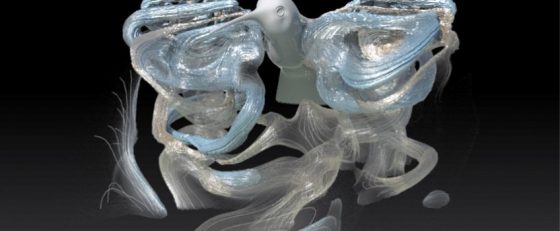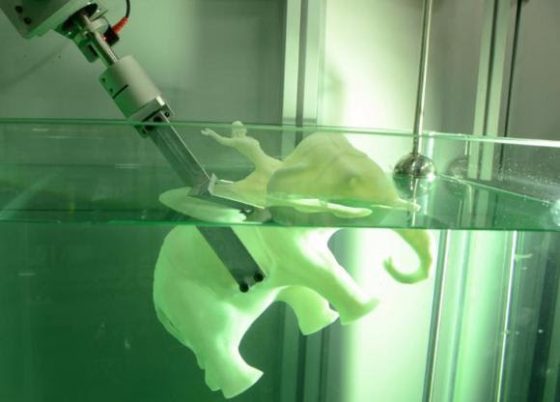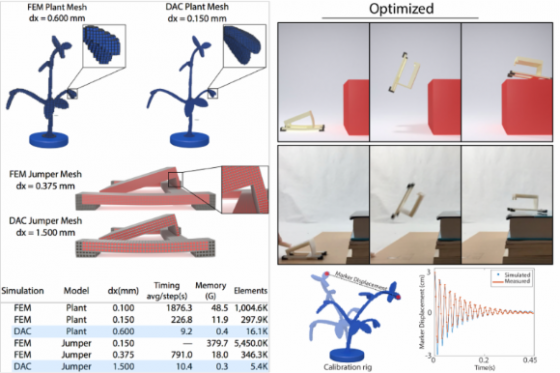More than 125 technical papers have been accepted in a wide variety of graphics disciplines.
The 44th International Conference and Exhibition on Computer Graphics and Interactive Techniques –aka Siggraph 2017 — has released details about the technical papers to be presented this year. This year’s peer-reviewed scholarly papers in computer graphics science will include work in Fluid Simulation, Fabrication, Geometry Processing and more. The papers will be presented throughout Siggraph 2017 July 30 – August 3, 2017 in Los Angeles.
Of the juried papers, the percentage breakdown based on topic area is as follows: 30% modeling, 25% animation and simulation, 25% imaging, 10% rendering; 4% perception, 3% sound, and 3% computational cameras and displays.
Highlights of the Siggraph 2017 Technical Papers program include:
Inside Fluids: Clebsch Maps for Visualization and Processing
Authors: Albert Chern, California Institute of Technology; Felix Knöppel, Technische Universität Berlin; and, Ulrich Pinkall, Technische Universität Berlin
Clebsch maps encode vector fields, such as those coming from fluid simulations, in the form of a function that encapsulates information about the field in an easily accessible manner. For example, vortex lines and tubes can be found by iso-contouring. This paper provides an algorithm for finding such maps.

Multi-Species Simulation of Porous Sand and Water Mixtures
Authors: Andre Pradhana Tampubolon, University of California, Los Angeles; Theodore Gast, University of California, Los Angeles; Gergely Klar, DreamWorks Animation; Chuyuan Fu, University of California, Los Angeles; Joseph Teran, Walt Disney Animation Studios, Disney Research, University of California, Los Angeles; Chenfanfu Jiang, University of California, Los Angeles; and, Ken Museth, DreamWorks Animation
This multi-species model for simulation of gravity-driven landslides and debris flows with porous sand and water interactions uses the material point method and mixture theory to describe individual phases coupled through a momentum exchange term.

Real-Time User-Guided Image Colorization with Learned Deep Priors
Authors: Richard Zhang, University of California, Berkeley; Jun-Yan Zhu, University of California, Berkeley; Phillip Isola, University of California, Berkeley; Xinyang Geng, University of California, Berkeley; Angela S. Lin, University of California, Berkeley; Yu Tianhe, University of California, Berkeley; and, Alexei A. Efros University of California, Berkeley
This paper proposes a deep learning approach for user-guided image colorization. The system directly maps a grayscale image, along with sparse, local user “hints” to an output colorization. The algorithm propagates user edits by fusing low-level cues with high-level semantic information learned from large-scale data.

Dip Transform for 3D Shape Reconstruction
Authors: Kfir Aberman, Tel Aviv University, Advanced Innovation Center for Future Visual Entertainment; Oren Katzir, Tel Aviv University, Advanced Innovation Center for Future Visual Entertainment; Qiang Zhou, Shandong University; Zegang Luo, Shandong University; Andrei Sharf, Advanced Innovation Center for Future Visual Entertainment, Ben-Gurion University of the Negev; Chen Greif, The University of British Columbia; Baoquan Chen, Shandong University; and, Daniel Cohen-Or, Tel-Aviv University
This paper presents a 3D acquisition and reconstruction method based on Archimedes submerged-volume equality. It employs fluid displacement as the shape sensor. The liquid has no line-of-sight. It penetrates cavities and hidden parts, as well as transparent and glossy materials, thus bypassing the visibility and optical limitations of scanning devices.

Dynamics-Aware Numerical Coarsening for Fabrication Design
Authors: Desai Chen, Massachusetts Institute of Technology; David Levin, University of Toronto; Wojciech Matusik, Massachusetts Institute of Technology; and, Danny Kaufman, Adobe Research
This paper presents a simulation-driven optimization framework that, for the first time, automates the design of highly dynamic mechanisms. The key contributions are a method for identifying fabricated material properties for efficient predictive simulation, a dynamics-aware coarsening technique for finite-element analysis and a material-aware impact response model.

For more information on the Technical Papers program and this year’s selections visit: s2017.SIGGRAPH.org/technical-papers. Registration is now open for Siggraph 2017.
A preview video of Siggraph 2017 Technical Papers.





